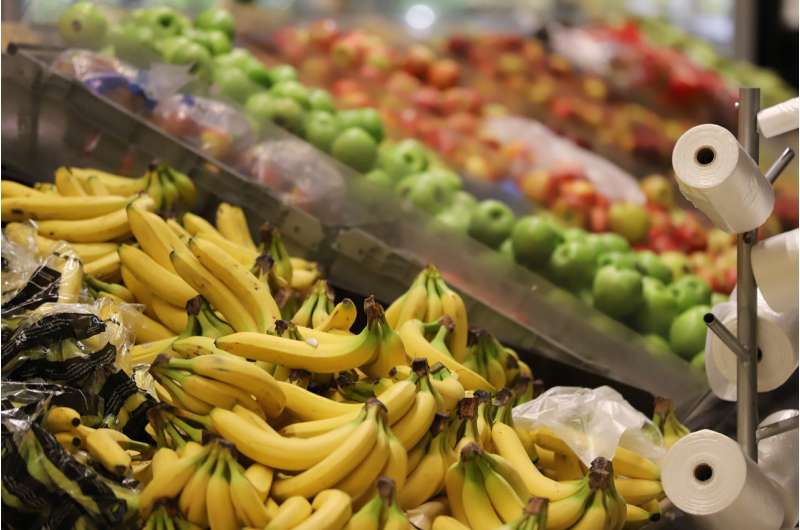Bananas are some of the worst food waste culprits

A study done at Karlstad University shows that seven products account for almost half the fruit and vegetables wasted by retailers. Potentially, food waste can be drastically limited by focusing on these products.
"Retailers may profit by allocating more staff hours to measures that lead to reduced fruit and vegetable waste, thereby saving money and the environment," says Lisa Mattsson at Karlstad University.
Today food waste involves not only wasted natural resources, but also financial losses. A growing population means that all actors in society – business, government agencies and citizens – have to handle food better to decrease the amounts that are wasted.
A few products account for half of the waste costs
Less food is wasted in retail than in households, but retailers also waste large amounts of food each year. In this study, the fruit and vegetable waste of three large retailers was analysed based on quantity, economic costs and the impact on the climate. The results show that seven categories of fruit and vegetable account for most of the waste as regards quantity, costs and the impact on the climate. These seven products are bananas, apples, tomatoes, salad, sweet peppers, pears and grapes. Together, these products account for almost 50 percent of what food waste cost the retailers. Focusing on decreasing the waste of these products could therefore potentially have great effects.
Waste reduction strategies are profitable
Most of the costs associated with food waste, around 85 percent, are related to the products themselves. The cost of waste management, such as emptying and removing waste, amounts to around 6 percent, while the staff hours spent removing products from the shelves, recording waste and disposing of products represent another 9 percent of the total cost. Since staff hours are a relatively small part in comparison to the cost of the products themselves, increasing staff hours to reduce food waste has much potential. A cost-benefit analysis showed that the costs incurred to double the amount of time staff spend on waste reduction measures, would be the equivalent of a 10 percent reduction in fruit and vegetable waste.
The study on the waste of fruit and vegetables by retailers was published online in the journal Resources, Conservation and Recycling.
More information: Lisa Mattsson et al. Waste of fresh fruit and vegetables at retailers in Sweden – Measuring and calculation of mass, economic cost and climate impact, Resources, Conservation and Recycling (2017). DOI: 10.1016/j.resconrec.2017.10.037
Provided by Karlstad University



















